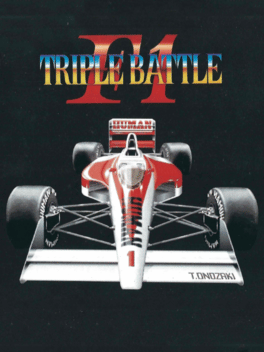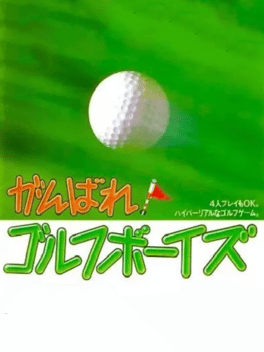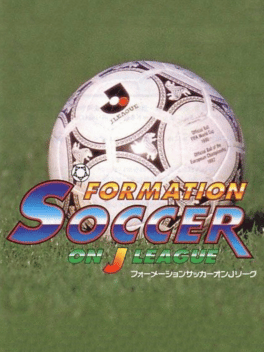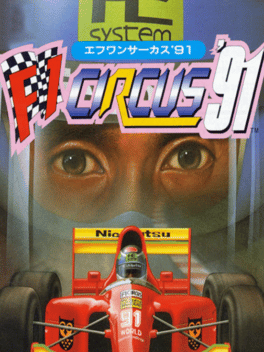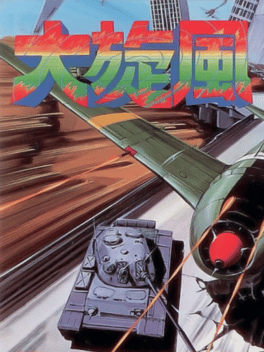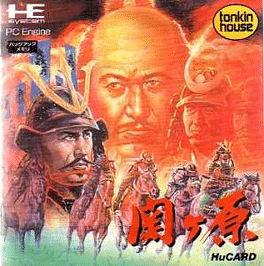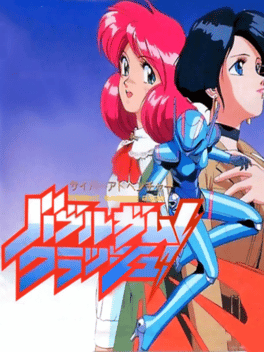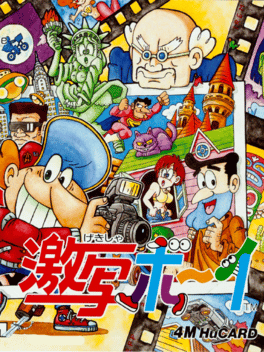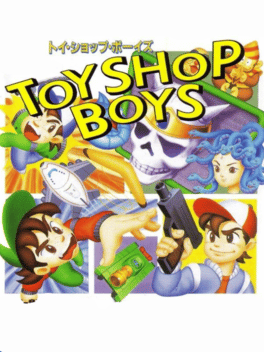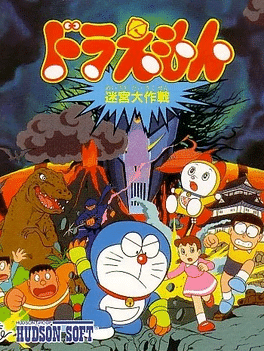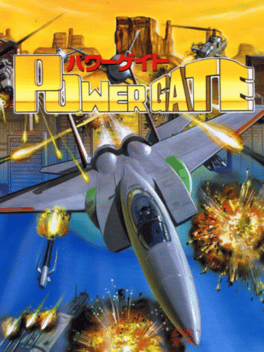Most Popular Turbografx 16 Pc Engine Games - Page 4
-
Fighting Run
1991
Fighting Run
1991
An action racing game featuring sprinting mechs. Fighting Run is a vertical scrolling action game for the PC Engine featuring mechs. The game was published by Nichibutsu, or Nihan Bussan. The goal of the game is to build a mech's stats and take on other mechs in straight courses. Both mechs sprint up the screen, but must also fight each other until one of them is destroyed. The mechs can also be damaged or stunned from obstacles in the course. -
F1 Triple Battle
1989
F1 Triple Battle
1989
The object is to win all the major international races on the Formula One circuit. The game can be played by either one, two or even three players (Battle Mode-only) simultaneously. Various modes of racing include: regular season, battle (which is similar to exhibition or single race mode in other Formula One video games), and the time trial mode which tests how fast a player can drive his or her race car on any of the world's premier road courses. Only the vehicles from the 1994 season are used. Michael Schumacher and Satoru Nakajima are the most popular racers in this video game, even though Nakajima is a hidden character. -
Usa Pro Basketball
1990
-
Ganbare Golf Boys
1989
Ganbare Golf Boys
1989
Multiplayer golf for the PC Engine courtesy of Masaya and Dual. Ganbare! Golf Boys ("Do Your Best! Golf Boys") is a PC Engine exclusive golf game that allows for up to four players to compete is a round of golf via the console's multi-tap peripheral. It did not receive a US localization. The game has a permanent top-down view of each hole, zooming in whenever the player is on the green, and has the "hit the sweet spot" power gauge system standard to most golf simulators. It features a total of two courses, with eighteen holes apiece. Ganbare! Golf Boys is notable for being the first project that prominent game musician Atsuhiro Motoyama ever worked on. -
Formation Soccer on J.League
1994
A soccer game for the PC Engine and part of Human's Formation Soccer series. Formation Soccer on J-League is a soccer game for the PC Engine and part of Human Entertainment's Formation Soccer series. The game focuses on Japan's top soccer league, the J-League, and features all ten teams active in the 1993-94 season. Formation Soccer on J-League was the penultimate game released officially on the PC Engine/TurboGrafx-16's HuCard format. The game features a standard exhibition mode, a league mode that recreates the 1993-94 J-League, and an All-Stars mode that features two teams comprised of all the best players. The Exhibition and All-Stars modes can be played with up to four human players. The J-League mode allows for two players to be on the same team and take on the CPU-controlled league cooperatively. -
F1 Circus '91
1991
F1 Circus '91
1991
A Formula One licensed racing game for the PC Engine and the second game in Nichibutsu's F1 Circus series. F1 Circus '91 is a top-down Formula One racing game with a strong simulation element. Players kit out their vehicle, take on various prominent Formula One competitors of the era in races that track the vehicle's damage and fuel. Due to the high speeds involved, players need to pay attention to flashing icons that indicate turns coming up in the road. The game followed 1990's F1 Circus and was followed by 1992's F1 Circus '92. The series would then move to the Super Famicom as Super F1 Circus. -
F1 Dream
1989
F1 Dream
1989
F-1 Dream is an automobile racing game for the PC Engine released exclusively in Japan in 1988. The graphics are identical to the arcade game, even down to the pit crew and lane and fans in the stands. The controls are the same as well: The d-pad controls all eight ways, and the two buttons work as both gas-and-brake and as the transmission. Press the II button to launch the car, and once first gear tops out, quick switch to the I button. If your car is Turbo-equipped, once second gear tops out, hold down both buttons to kick in the afterburner. Letting go of the top gear button will brake the car, and hitting the button again will resume acceleration. The game includes back-markers as well. If you're leading the race or you and an opponent are well ahead of the pack, slower white cars will appear on the track to make things interesting for you, usually just as you're coming up to a particularly tough corner, or drifting across your lane on a straight and forcing you to make a course correction. They're a minor an -
F1 Pilot
1989
F1 Pilot
1989
A Formula 1 racing game from Pack-In-Video, developed for the PC Engine. It was never released outside of Japan. F-1 Pilot is a F1 racing game for the PC Engine, one that depicts the racing from the driver's seat of the vehicle. The player is able to select a car before a race, but they all appear to be functionally identical except for the color. The player can also choose to have engine noises or BGM, but not both. Selecting either of the BGM modes will disable all sound effects from the game, including tire screeching and crashing noises. The game has some odd uses of English (the game was never fully localized into English): For instance, it refers to F1 drivers as "pilots" and the title screen affirms that the player is the King of Kings. -
Dai Senpu
1993
Dai Senpu
1993
Daisenpū is a vertical shooter by Nec Interchannel and conversion of the arcade game of the same name (also known as Twin Hawk) originally released by Toaplan in 1989. In the year 193X, country R is overwhelmed by hostile enemy forces and the small oasis town 'S' is the main target of the attack. A handful of survivors escape to the jungle and start working on a counter attack - but they are soon discovered and are now running out of time, and they must launch the Daisenpū squadron before it is fully operational. The player takes control of a fighter plane and must fly deep into enemy territory, attack ground targets such as tanks, turrets and warships (the game curiously doesn't feature any flying enemies and no obstacles to fly into, beside enemy bullets). The plane starts equipped with a limited double-shot machine gun that can be slowly upgraded throughout the game by collecting power-pods left behind by small trucks. But the originality of Daisenpū lies elsewhere - the player can call a small squadron of si -
Violent Soldier
1990
Violent Soldier
1990
Sinistron, released as Violent Soldier in Japan, is a side-scrolling, ship based shooter that was released for the TurboGrafx-16 in 1991. The game is notable, among other things, for the adjustable armored jaws of the player's spacecraft. Opening the invincible jaws of the ship increases the spread of the player's shots but exposes the vulnerable cockpit. Obtaining one weapon upgrade allows the ship's jaws to be set half-way open (a 3-shot spread) or closed (with increased damage), and a second upgrade allows them to be closed, half open, or fully open (a 5 shot spread). Five power-ups exist in the game. The Vulcan flame cannon, crystal-pulse laser, and CHAOS (homing) missiles are weapon upgrades. There are also speed upgrades and plasma droids, invincible pods which will flank the ship. The plasma droids can absorb enemy pellets and will even damage enemies they come into contact with. The ship's charge-up attack releases a circular wave of force that will damage all enemies in a radius around the ship. Sinist -
PC Pachi Slot 777
1992
-
Pro Tennis: World Court
1988
Pro Tennis: World Court (プロテニスワールドコート Puro Tenisu: Wārudo Kōto?) is a tennis sports arcade game that was released by Namco in 1988 only in Japan; it runs upon Namco System 1 hardware, and was inspired by the 1987 Famicom game Family Tennis. In August 1988, the game was ported to the PC Engine console, in which a new tennis-based role-playing quest mode was added, and was later ported to the North American TurboGrafx-16 console by NEC under the title of World Court Tennis in 1989 and a sequel named Super World Court was released in 1992, which ran on Namco NA-1 hardware and allowed up to four players to play simultaneously. -
Tricky
1991
Tricky
1991
Kicking-things puzzle game that is guaranteed to twist your brain up until it escapes out of your nostrils. -
Sekigahara
1990
Sekigahara
1990
AKA: 関ヶ原. A turn-based strategy game based on the famous battle of Sekigahara. This battle decided the major Shogun and concluded the sengoku era. -
Bubblegum Crash
1991
Bubblegum Crash
1991
Bubblegum Crash is a PC Engine graphic adventure game based on the anime OVA series of the same name. The anime/game is set in the near future of 2032, which has seen Tokyo split into two by a massive earthquake. Corporations rule the country, production-line humanoid robots named "boomers" are being used by villains to commit crimes, and the beleaguered police are too under-budgeted and incompetent to handle it all. The all-female mercenary team the Knight Sabers, who use powerful exosuits called "Hard Suits", are the city's best defense. The game operates similarly to other adventure games of the era. The player is given a selection of commands that they can use to interact with the world, including talking to NPCs, picking up and using objects in their inventory and moving to other areas. At any time the player can look and listen for extra context clues. The commands are in English, but the game's story and dialogue text is entirely Japanese. The game will occasionally switch protagonists, starting with Nene -
Gekibo: Gekisha Boy
1992
Gekibo: Gekisha Boy
1992
Gekisha Boy is a 2D side-scrolling game in which you play the part as a camera man who is out to snap some high paying photos to please their contractor. You control the movement of the shutter aim and you have slight control over the character as well (using the same style of control as such games as Cabal). You walk along a side-scrolling street and you have to snap unusual/tragic/funny or simply weird photos to rack up the points. It can be anything from crashing airplanes to Marilyn Monroe lookalikes and UFOs abducting cars. Every stage has a set score you need to reach to progress to the next one or you have to start it over again. -
Ryuukyuu
1990
Ryuukyuu
1990
A puzzle game where you have to drop playing cards so they make poker-valid lines horizontally, vertically and diagonally. -
Toy Shop Boys
1990
-
Doraemon: Meikyuu Daisakusen
1989
Meikyu Daisakusen is an action puzzle game viewed from an overhead perspective. Each stage consists of a maze filled with various enemies and items. You must collect all of the keys on the stage to open the exit door while avoiding or eliminating enemies. Your primary method of dealing with enemies is to dig holes; if an enemy walks into a hole, they are momentarily trapped and you can then fill the hole to kill the enemy. The game is a conversion of the 1987 Nichibutsu coin-op Kid no Hore Hore Daisakusen, which also saw a modified Famicom version called Booby Kids. An unmodified conversion was released in North America as Cratermaze. -
Power Gate
1991
Power Gate
1991
Power Gate is a side-scrolling shoot 'em up, developed by Make and published by Pack-In-Video, which was released exclusively in Japan in 1991.

